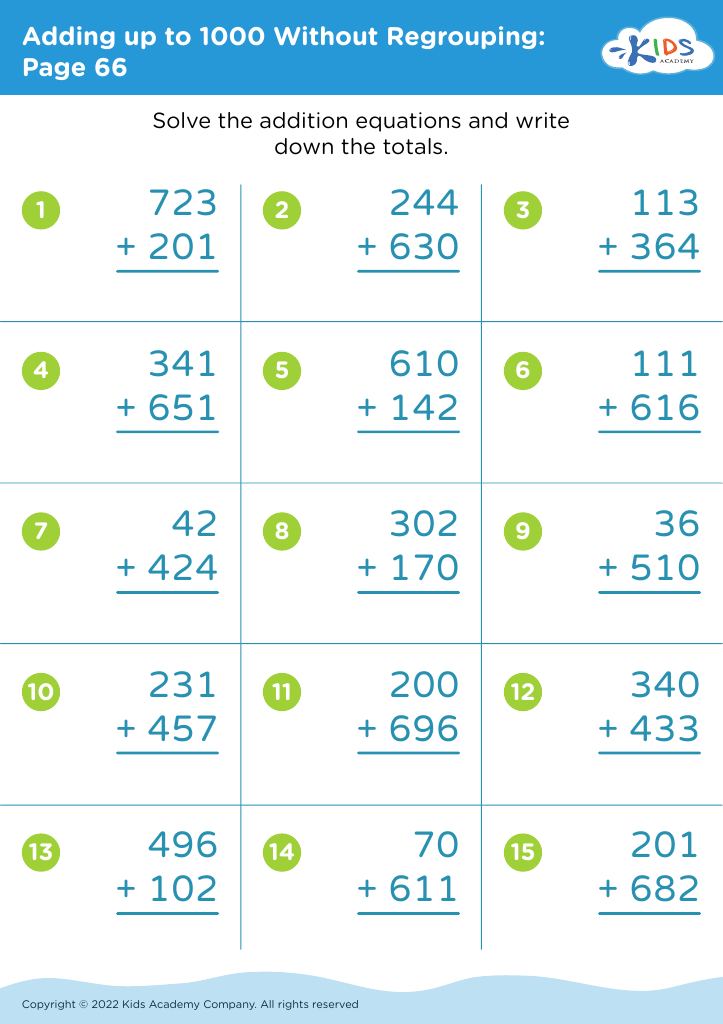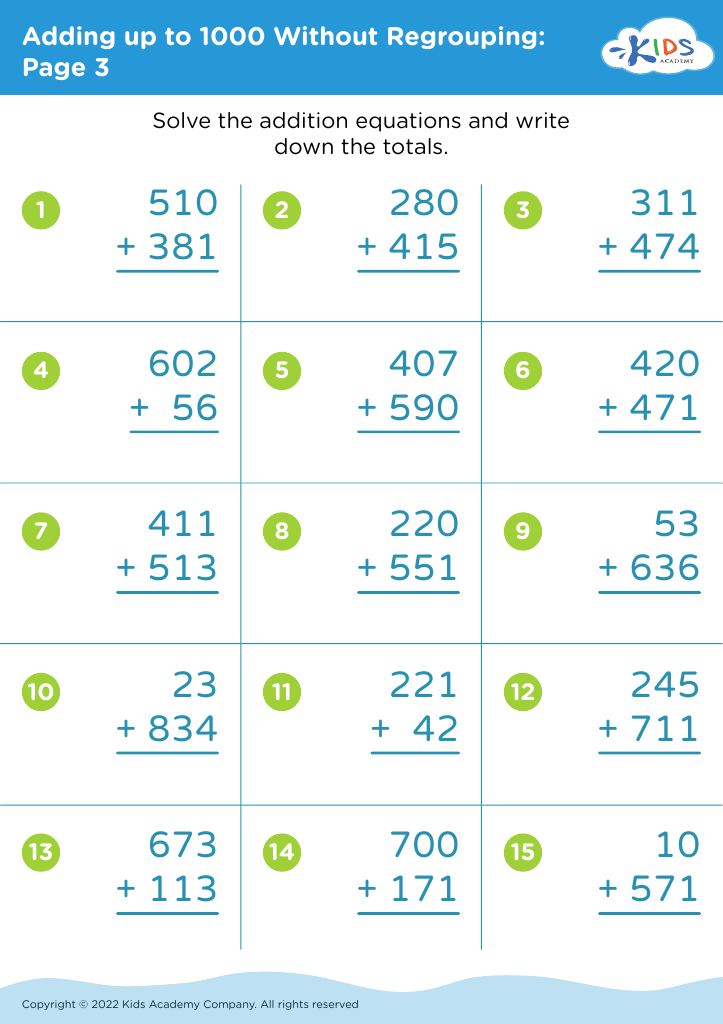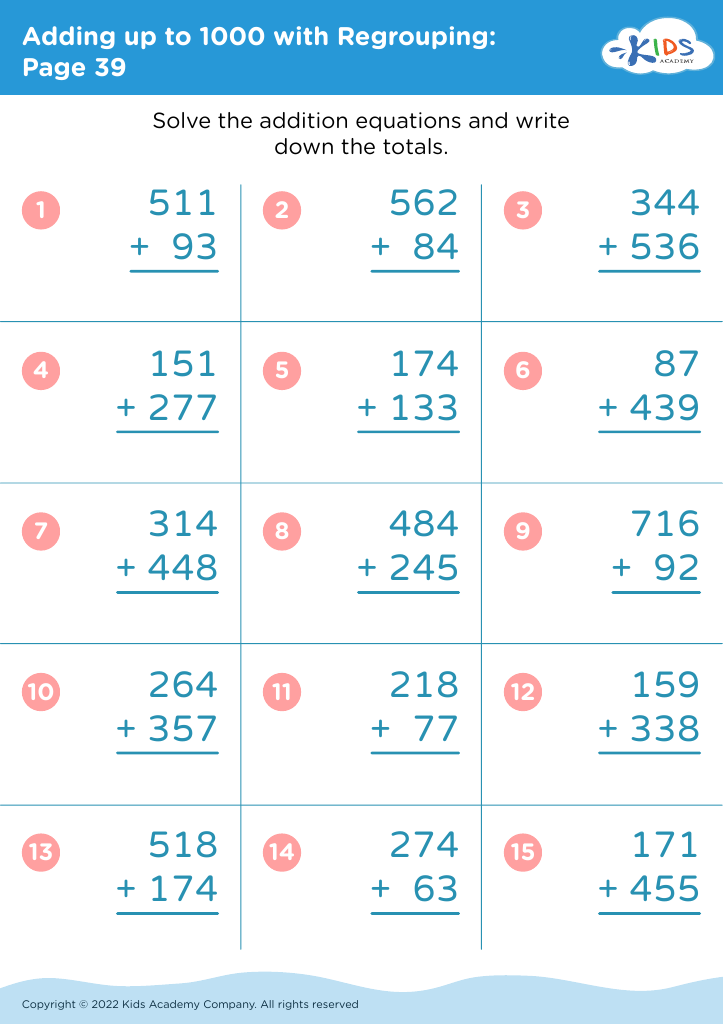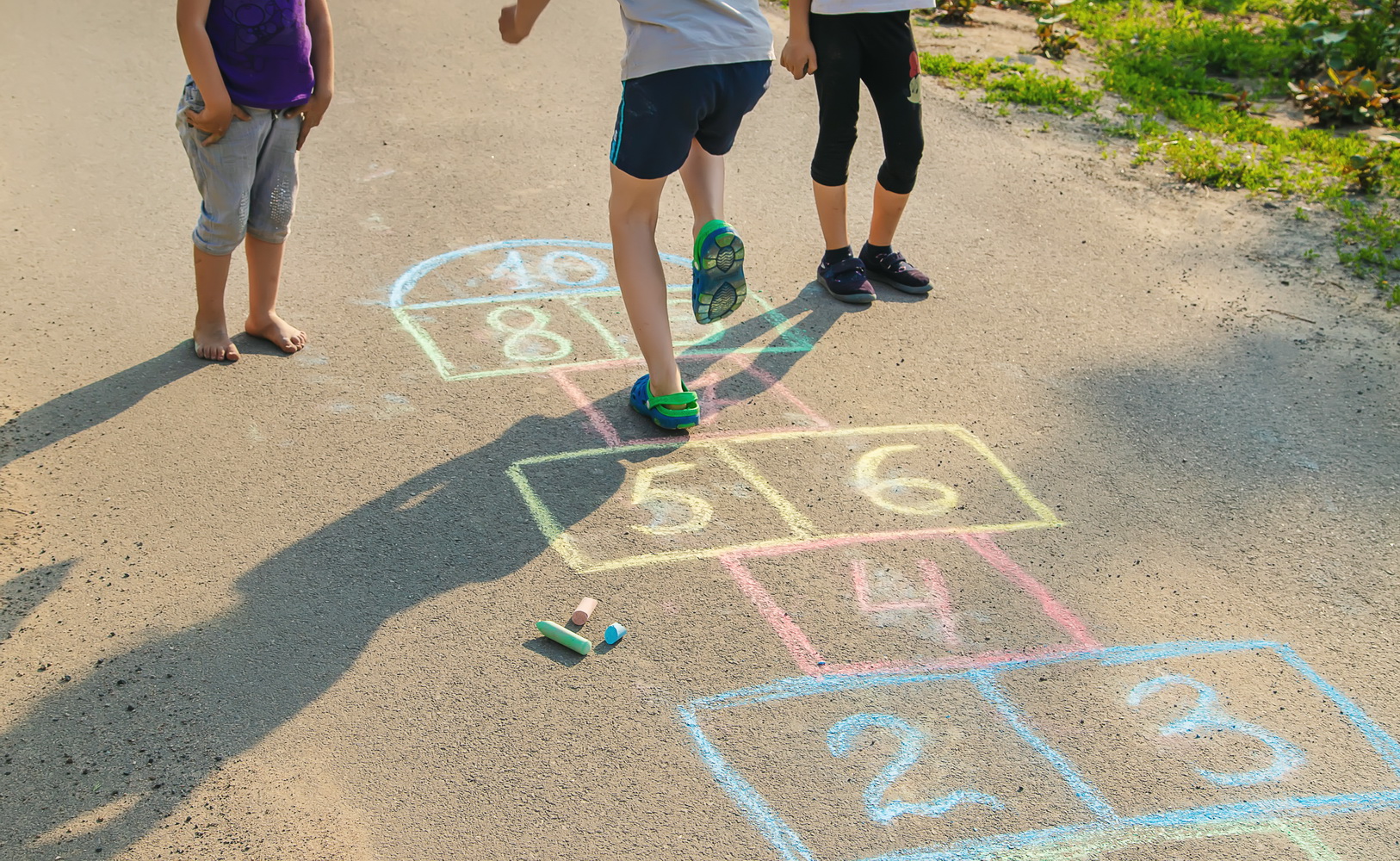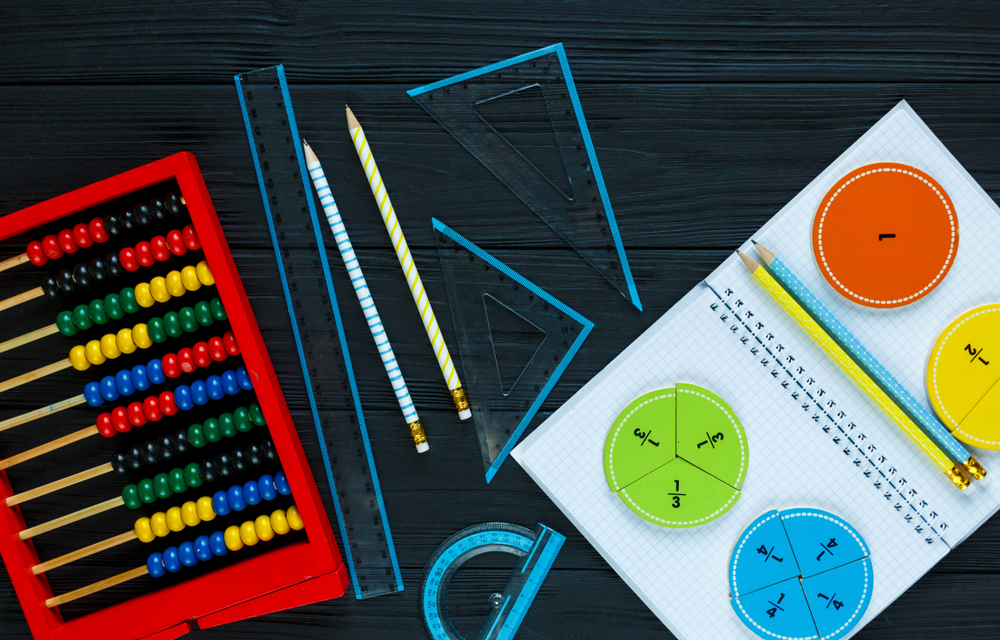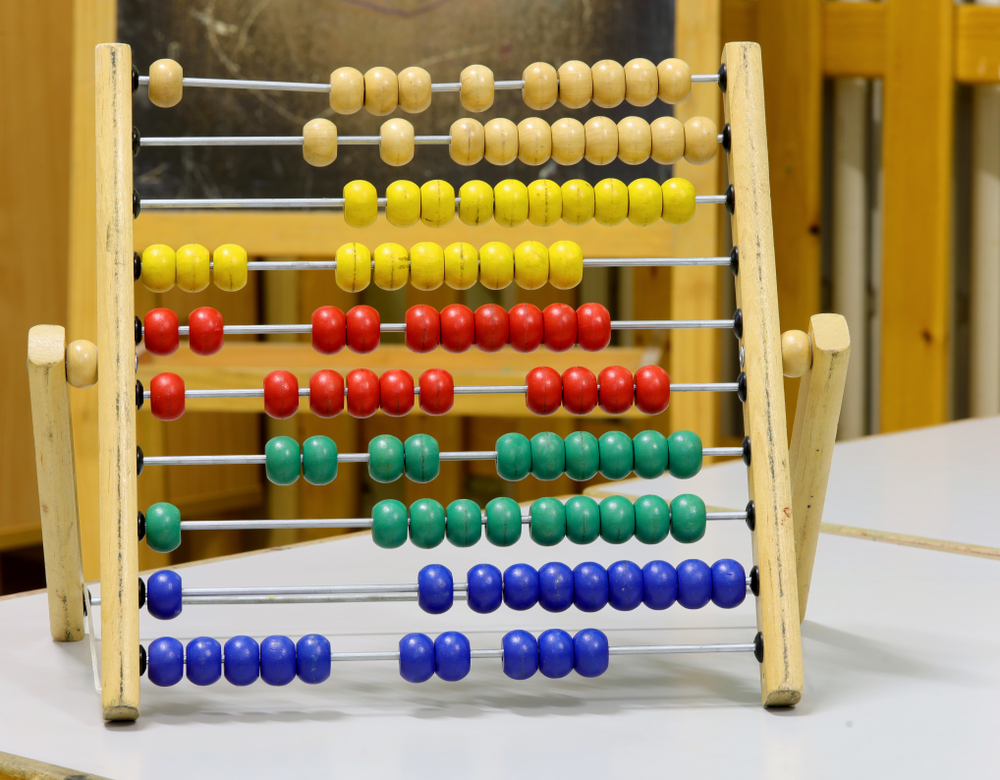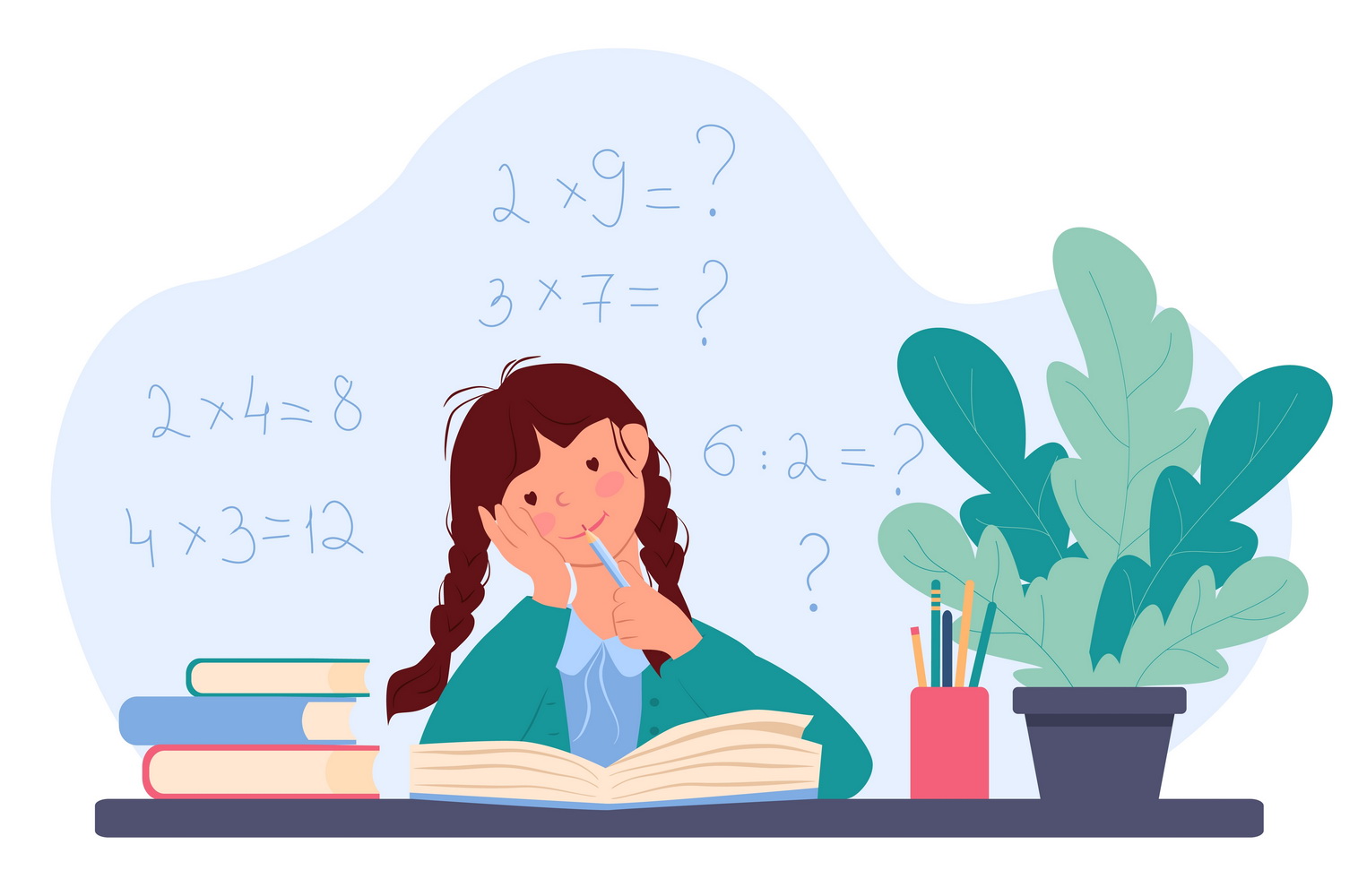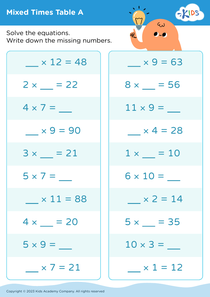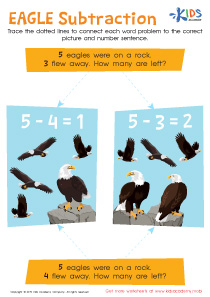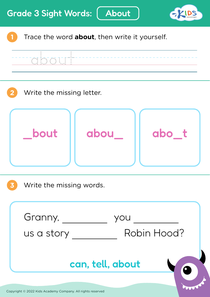Understand patterns Grade 3 Addition Worksheets
3 filtered results
-
From - To
Our "Understand Patterns Grade 3 Addition Worksheets" are designed to help third graders recognize and use arithmetic patterns. These engaging resources focus on reinforcing addition skills while promoting critical thinking and problem-solving abilities. Each worksheet is expertly crafted to make learning enjoyable, featuring fun exercises and challenges. Children will discover patterns in addition tables, sequences, and equations, which enhances their ability to predict and strategize. Perfect for classroom use or extra practice at home, these worksheets provide an excellent foundation for higher-level math concepts. Spark your child's interest in math with our printable addition worksheets today!
Understanding patterns in Grade 3 addition is crucial for a child's math development, and it's important for both parents and teachers to engage with this concept. It forms the foundation for more advanced mathematical concepts that children will encounter in later grades.
First, recognizing patterns in addition helps in developing mental math skills. When children identify patterns, such as sequencing odd and even numbers or summing multiples of ten, they begin to simplify complex problems into manageable steps, boosting their confidence and accuracy.
Second, these patterns streamline the learning process. By regularly practicing addition patterns, students start to notice shortcuts and strategies that can speed up their calculations. For instance, knowing that 8+7 is the same as finding 8+2+5 (because 10 is a cornerstone number in our base-10 system) allows for faster and error-free calculations, emphasizing mathematical intuition over rote memorization.
Third, pattern recognition is directly connected to problem-solving skills. It enhances their ability to detect relationships between numbers, fostering logical and critical thinking.
Ultimately, caring about understanding patterns in Grade 3 addition helps establish a strong mathematical foundation, promotes efficient problem-solving strategies, and encourages a positive attitude toward learning math by making it more engaging and less intimidating.

